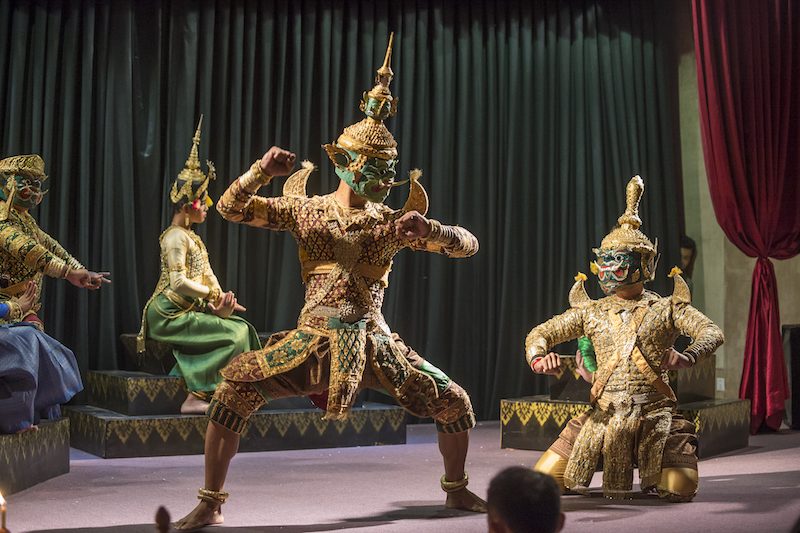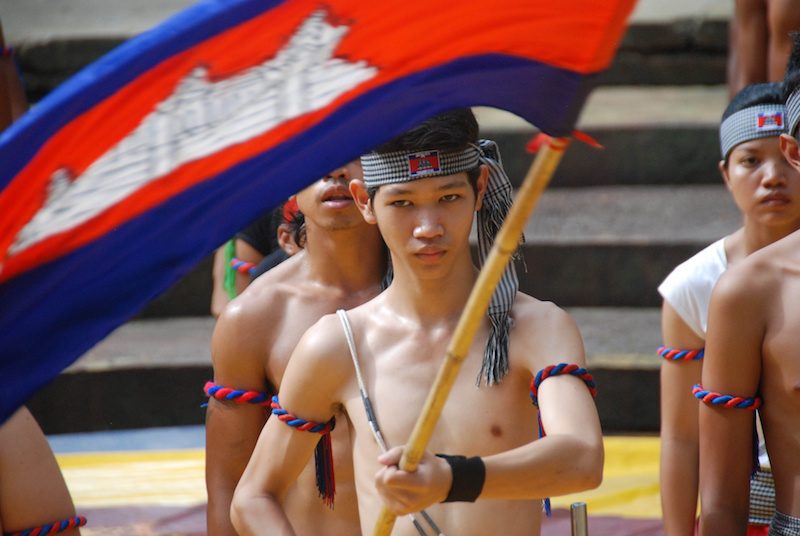Cambodia has submitted an official request to Unesco to add the Khmer masked-dance lakhaon kaol and the Cambodian martial art bokator to its Lists of Intangible Heritage.
Culture Minister Phoeurng Sackona said on Tuesday that documents were submitted to Unesco before the March 31 deadline, adding that the international body would announce its decision in 12 to 18 months. “This is the request for listing, next there will be procedures,” she explained.

According to a press release issued on Tuesday by the Culture Ministry, Unesco has issued a formal reply confirming it will consider Cambodia’s request.
In 2003, Unesco member countries decreed that some artforms and cultural traditions must be protected so they can be passed on to future generations. As in the case of tangible heritage such as Angkor Archaeological Park and the Preah Vihear monument in Cambodia, each country’s request is reviewed and approved by Unesco’s World Heritage Committee.
Several Cambodian art forms have already been given Intangible Heritage status.
In 2003, Khmer classical ballet was put on the list as “Royal Ballet.” This was followed in 2005 by the giant shadow puppet, or sbek thom. In 2015, “tugging rituals and games in the rice-farming cultures of East Asia and Southeast Asia,” including Cambodia, were also inscribed on the list. And last year, chapei, described as “long-necked lute and epic singing,” was put on the List of Intangible Cultural Heritage in Need of Urgent Safeguarding.
The approval process takes years, as the Culture Ministry release noted on Tuesday. “Based on Unesco’s principles and procedures, each document that was submitted needs to get through many steps of inspection and evaluation by the international expert team before being put for inspection and decision at the meeting of the Intergovernmental Committee of Unesco that will be held at the end of the upcoming 2018,” the release said.

Vath Chamroeun, secretary general of the National Olympic Committee of Cambodia (NOCC), said on Tuesday that his committee has been working on the application and collecting documents for the bokator submission since 2014.
Asked why he felt a sense of urgency to get bokator on the list, Mr. Chamroeun said, “Intangible Cultural Heritage lives within people. If people who knew these cultural traditions and martial arts die, we will lose it all.”
“So first, we are worried of the loss. Second, we are worried by the lack of transfer of this martial art knowledge…to the younger generation,” he said.
Concerned by the loss of the Khmer martial art, the NOCC has compiled the first book on bokator. The 224-page book outlines all bokator’s basic movements for the first time and is due to be released in the coming weeks both in Khmer and English, Mr. Chamroeun said.
In addition to the applications sent to Unesco last month, Cambodia is working on submitting other cultural traditions for inclusion on the list, according to the Culture Ministry’s press release.
“The Culture and Fine Arts Ministry’s technical team has been trying to study and prepare documents on other national intangible heritage such as Pleng Arak (Khmer Arak song), Khmer silk weaving…in order to be ready to submit to Unesco.”




